Simon Lever Learning Community Presents: A Simpler Alternative to Generally Accepted Accounting Principles (GAAP)
The Financial Reporting Framework for Small and Medium Entities (FRF for SMEs) was issued in 2013 by the American Institute of CPAs (AICPA) in response to the need for a more straightforward method of accounting for smaller, privately held companies.
This method of accounting blends traditional accounting and the accrual income tax method to provide a comprehensive picture of the company without unnecessary complexities.
Why?
The FRF for SMEs may be a great option since many small and medium-sized businesses are faced with the rising costs of complying with additional complexities in the Generally Accepted Accounting Principles (GAAP). For companies currently reporting on the income-tax basis but considering a change to the cash basis of income tax accounting, the FRF for SMEs may provide a more useful financial picture for owner analysis.
Who?
FRF for SMEs is an option for for-profit, private companies with the following characteristics:
- The business should be closely held and owner-managed
- The organization does not have regulatory reporting requirements that essentially require it to use GAAP-based financial statements
- The company is in an industry that does not require specialized guidance for complex transactions
- The entity has no significant foreign operations
- Key users of the FRF statements have direct access to owners/management
- Users of the business’s financial statements may have a greater interest in cash flows, liquidity, statement of financial position strength, and interest coverage
What?
The key features of the FRF for SMEs are:
- Historical cost. FRF for SMEs uses historical cost basis, steering businesses away from complicated fair value measurements.
- Optionality. FRF for SMEs offers tailored reporting to meet user needs.
- Relevance. FRF for SMEs includes only financial reporting topics typically encountered by small businesses.
- Simplicity. FRF for SMEs avoids complicated, prescriptive rules that add time and costs.
- Targeted disclosures. The targeted disclosures issued by FRF for SMEs only provides what a user needs to see in financial statements.
When?
Some of the most significant changes to GAAP will become effective for the years ending on December 31, 2019, for revenue recognition and December 31, 2020, for lease accounting.
Both of these changes will require significant compliance efforts for tracking and reporting. In order to achieve the highest cost-savings, companies will want to make the decision to transition to FRF for SMEs before any interim or annual reporting occurs for these periods.
How?
If you’re considering switching to FRF for SMEs, there are some discussions you’ll need to have before making the transition, including:
- All users of the statements (bonding companies, banks, etc.) must agree to use this framework.
- Debt agreements may need to be modified.
- Users of statements may need education around the differences between the current method of accounting and FRF for SMEs.
Next steps?
Simon Lever can assist companies in determining the best financial framework for them. We can also lead conversations with banks, bonding companies, and others to discuss a potential transition.
For more information about FRF for SMEs, contact us today. We’ll be happy to make sure all of your questions are answered, and all your needs are addressed.




